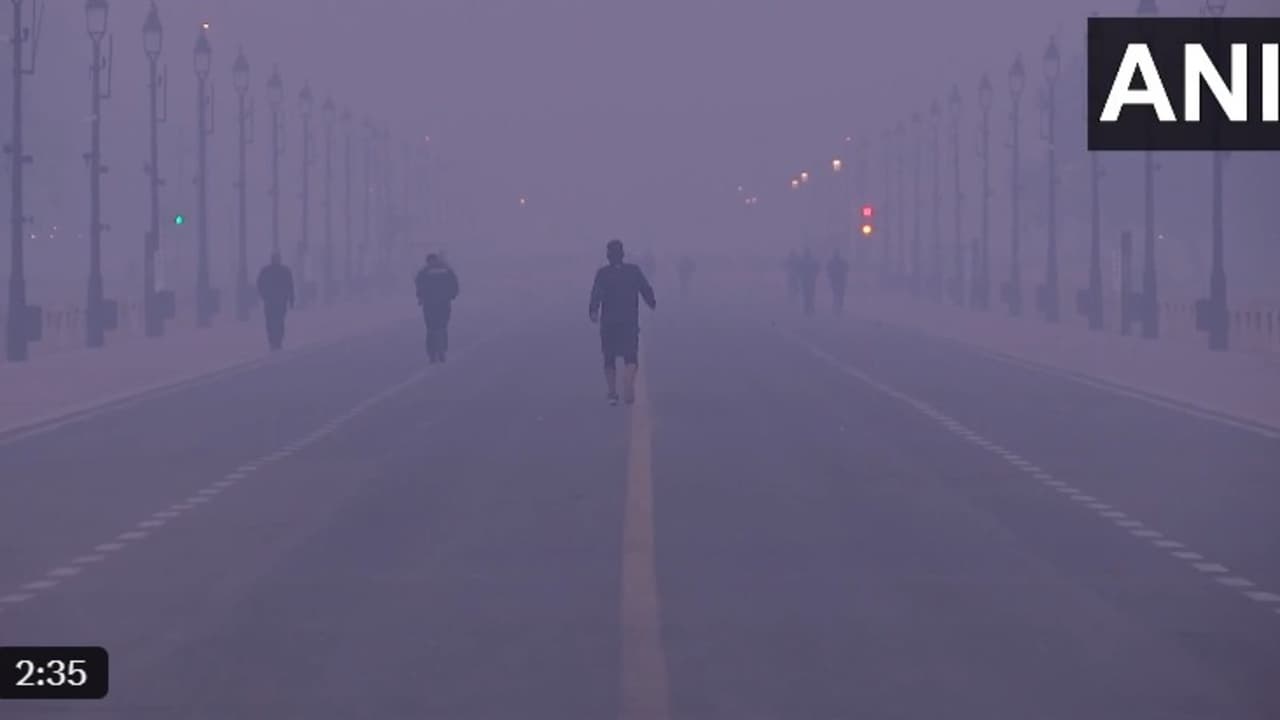Delhi Pollution Level: Why is AQI 380+ in Delhi for 10 consecutive days? Fog, cool winds and rising toxic particulates – is the capital heading towards a major smog lockdown? AQI reached 450 in 14 areas…will the situation get worse next week?
New Delhi. The country’s capital Delhi is surrounded by an invisible danger these days – poisonous air. AQI has remained above 380 for 10 consecutive days and it is becoming difficult for people to breathe. Due to fog, cold air and almost no wind speed, pollution is stuck in the air. Every morning when people wake up, the sky looks hazy, the roads are covered in smog, and the breath becomes heavy as soon as they step out of the house. Doctors are clearly saying that this situation is like a “health emergency” – everything from daily travel to children going to school is being affected. 14 areas of Delhi have reached ‘severe’ category, where AQI is more than 400. At some places the meter reached 440–450, which can directly attack the lungs, heart and immune system. Is Delhi going to become more ‘toxic’ in the coming days? Let us understand it in simple language.
Scroll to load tweet…
Why is Delhi’s air so bad for the last 10 days? When will the air improve?
Delhi remained covered in a thick layer of smog on Sunday also. At 5 am, the capital’s 24-hour average AQI was recorded at 380—which clearly indicates that the air is at extremely dangerous levels. There is very little wind, and this has become the biggest problem. When the wind does not blow, the pollution gets stuck near the ground, that is, we inhale the same air again and again.
Which areas are the most ‘toxic’?
Out of 39 stations in Delhi, 14 places have reached the “Severe” zone. AQI recorded above 400 here:
- Anand Vihar
- Wazirpur
- Vivek Vihar
- Ashok Vihar
- Bawana
- Mundaka
- Narela
- Punjabi Bagh
- Rohini
- Nehru Nagar
- North Campus
- Sonia Vihar
- Burari Crossing
- and many others
The worst conditions were seen in Wazirpur and Vivek Vihar, where AQI reached 440–450. This level directly affects-
- children
- the elders
- asthma patients
- heart patients
- on pregnant women
Delhi’s “cleanest” area, Mandir Marg, was also at AQI 298 – which itself falls in the “poor” category.
Have strict GRAP rules been implemented?
In view of the continuous deterioration in air quality, CAQM has implemented Stage-IV like measures despite being in Stage-III. What does it mean:
- strict restrictions on industries
- ban on construction
- tight control on trucks
- Strict rules for dust control
- Action on coal and diesel running units
- In a large scale checking conducted in Sonipat, 29 units were found breaking the rules.
This cross-border industrial pollution further poisons Delhi’s air.
Why were the office timings changed? Will it reduce traffic pollution?
Traffic emission is the biggest reason in Delhi, hence the timing has been changed to distribute the crowd:
- Delhi Government Offices: 10 am-6:30 pm
- MCD Office: 8:30 am-5 pm
- Apart from this, private offices have been advised 50% work-from-home.
Its sole purpose is to reduce vehicular traffic during peak hours and reduce pollution.
MD weather alert: Will the air get more poisonous?
IMD has clearly said that in the next 7 days the wind will be very light, fog will form in the morning, the temperature will go down at night. This weather traps pollutants closer to the ground, meaning the AQI may worsen, especially in the early morning, late at night or on foggy days. The 7-day outlook also shows that the wind will remain stuck at a speed of 0–5 kmph, which will cause the smog to become denser.
Can Delhi learn from Beijing?
Beijing achieved great success through smart industry controls, strict vehicle regulations and real-time pollution management. Delhi is also trying, but the weather and geographical location make it more difficult.
Will Delhi’s air get worse still?
- Yes-According to IMD, light wind and dense fog can further deteriorate the air quality.
- The next 3-4 days may prove to be the most difficult for the people of Delhi.
Be careful:
- avoid morning walk
- wear a mask
- Reduce exposure of children and elderly
- Keep air-purifier or ventilation in the house
